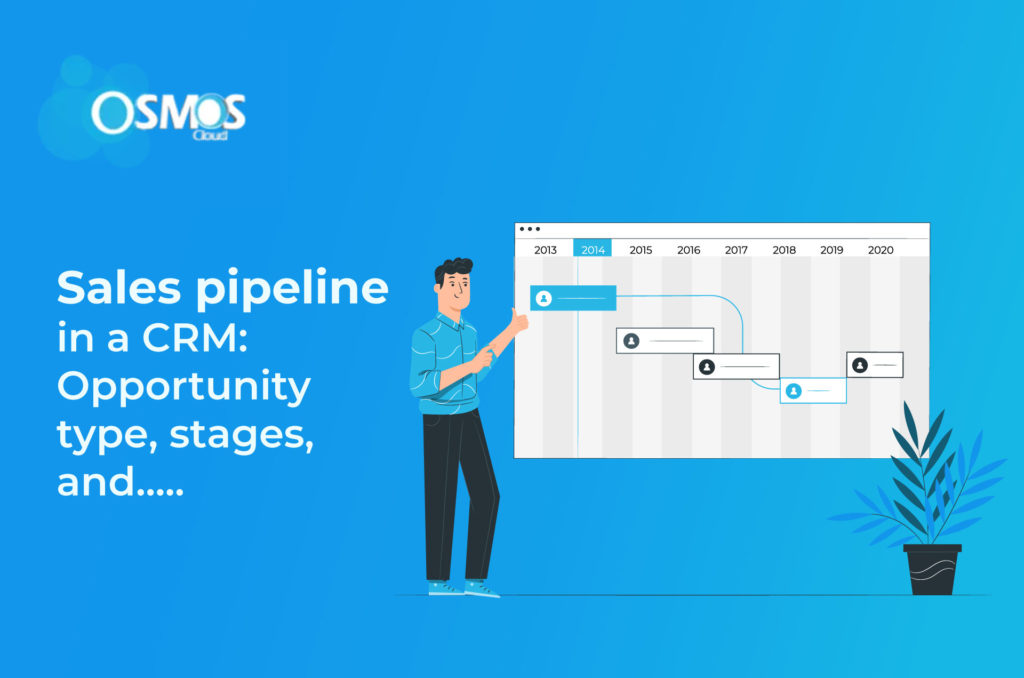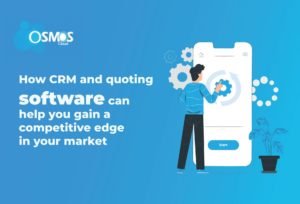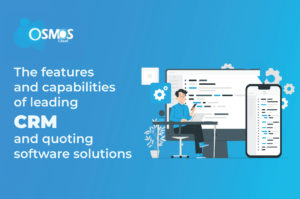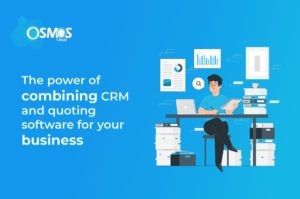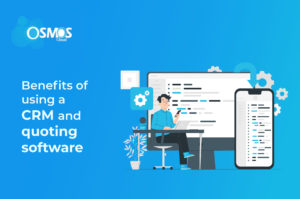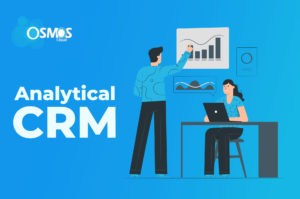Find out how to build a sales pipeline for your company with the help of CRM. Learn about each step of the process.
Summing up, a Sales Pipeline in a CRM is an invaluable tool for salespeople, allowing them to manage their leads and prospects effectively. It provides insight into where the sales process stands, helping identify opportunities that businesses may have overlooked.
Additionally, it can help track progress over time and alert managers of potential bottlenecks or other issues. Businesses can benefit from improved sales, greater customer satisfaction, and better efficiency by using a Sales Pipeline in a CRM.
Overview of Sales Pipeline in CRM
A well-implemented CRM with a strong sales pipeline can be invaluable in driving long-term success for any company. A CRM sales pipeline can streamline and automate the sales process, enabling companies to drive more efficient and predictable results.
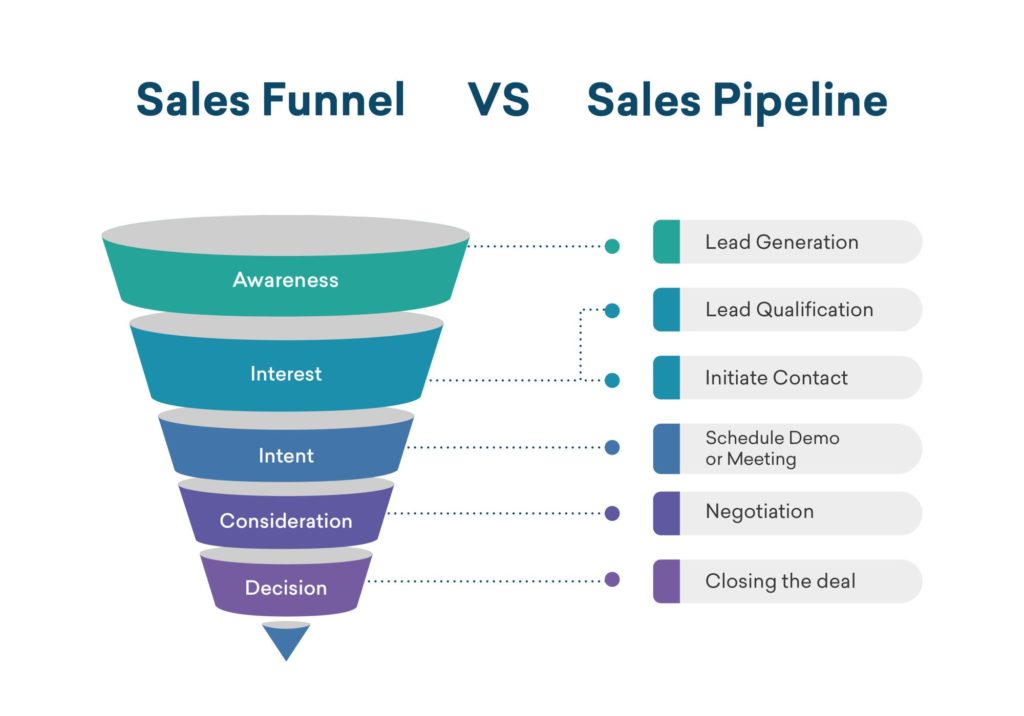
It offers visibility into opportunities at each stage of the sales cycle, allowing you to adjust strategies appropriately and identify any potential issues before they become roadblocks.
Today’s article will cover some of the basics when it comes to building a successful CRM sales strategy for business, including the different opportunity types & stages, as well as how to get started constructing an efficient sales pipeline. Let’s dive in!
What is a Sales Pipeline?
A sales pipeline is the process of taking a potential customer from initial contact to a closed sale. It involves a series of steps and stages that map out how each prospect moves through the sales process. This enables you to track where each lead is in the cycle, keep track of activities and conversations, plan for follow-up tasks, and more.
It also allows you to ensure that no lead falls through the cracks and provides insight into your team’s performance. A sales pipeline helps salespeople focus their time on the most promising prospects and manage their efforts more efficiently.
It is an essential tool for successful businesses, as it can help track progress, identify potential opportunities and provide data-driven insights into sales performance. Businesses can be better prepared to nurture leads and close more deals by using a sales pipeline.
3 Opportunity Types in a Pipeline
Sales pipelines can be divided into three primary opportunity types, each requiring a different approach to managing and optimizing the sales process. Let’s break them down here for you!
● Active
Active Opportunity Type in CRM Sales Pipeline indicates that a deal is still going on and is being tracked to close. Sales reps must remember that the active opportunity type should always be monitored, as it helps show where a deal stands in the pipeline.
The Active Opportunity Type can give sales teams insight into when a deal has been created and when it needs to be closed. It’s especially helpful when tracking each step in the sales process and understanding where any issues may arise.
Sales reps should use this information to stay ahead of potential roadblocks and to determine what strategies may need to be employed to progress a sale quickly and efficiently.
● Won
Marking an Opportunity as ‘Won’ in a CRM Sales Pipeline is a very important step in the sales process. It indicates that the customer has decided to purchase your product or service and will also add the revenue value of that sale to your reporting data.
This data can then be used to analyze customer behavior and patterns and inform the sales process for future opportunities. Winning an opportunity proves that your team has been successful in convincing a customer to purchase from you, and it’s important to recognize this success with a ‘Won’ status in your CRM Sales Pipeline.
Doing so will help ensure that every sale is accounted for and that your reporting data is accurate and up to date.
● Lost
Lost Opportunity type in the CRM sales pipeline is a valuable metric that can help track sales performance and enable managers to understand better what factors lead to lost Opportunities. With this insight, teams can develop strategies to reduce the number of lost opportunities and increase their conversion rates.
It also helps identify areas for improvement by analyzing which actions or activities were unsuccessful in generating a sale. By tracking this data, sales teams can gain insight into their process and make informed decisions about direction. Lost Opportunities also provide important feedback for customer success teams to understand why customers dropped out of the buying journey.
As a result, it helps to find out how they can improve the customer experience. Understanding what types of Opportunities are being lost and why can help organizations make smarter sales decisions while improving customer satisfaction.
What Are The Stages Of A Sales Pipeline In CRM?
The stages of a sales pipeline in a CRM system typically involve four distinct steps. We’ll have a look at them briefly:
1. Leads Prospects
The Leads Prospects stage of the sales pipeline in a CRM (Customer Relationship Management) system is the first step in creating relationships with potential customers. During this stage, your sales team will collect information about leads and prospects, such as contact details and purchase history, to determine whether or not they are a good fit for your business.
This stage also involves qualifying leads and building relationships with them to move them further along in the sales funnel. By accurately collecting and analyzing data from this stage, your team will have a better chance of converting leads into paying customers.
The Leads Prospects stage is essential for any successful CRM system, as it helps ensure that your team can effectively target potential customers and generate more sales.
2. Contacting Potential Customers
The Contacting Potential Customers stage of a sales pipeline in CRM is an important step in the lead generation process. It involves reaching out to prospects who have expressed interest in your product or service and engaging them further.
At this stage, you must ensure that your contact information is up-to-date and that you track conversations with these prospects. You may also need to do some research on the prospect before contacting them, in order to craft an individualized message that is tailored to their interests.
Engaging with prospects at this stage helps build relationships and trust, paving the way for future sales opportunities. It can also help you narrow your list of prospective customers by quickly qualifying and disqualifying those who may or may not be interested in your product or service.
By investing the time to implement effective contact strategies, sales teams can better qualify leads and increase their chances of closing deals down the line.
3. Qualification
The qualification of customers stage in a customer relationship management (CRM) system is the process of determining whether or not a potential customer is ready to move forward with a purchase. This stage typically involves analyzing the customer’s needs, budget, and timeline to see if they meet the criteria for moving on to the next step in the sales pipeline.
If they do, the customer is marked as qualified and progresses to the next stage; if not, they are removed from consideration. The goal of customer qualification in a CRM sales systemis to save sales teams’ time and resources by quickly identifying which leads will be worth pursuing further development.
This stage also helps sales representatives stay organized by enabling them to eliminate leads that don’t fit their criteria. Additionally, customer qualification in a CRM system helps sales teams tailor their strategies more precisely by allowing them to target qualified leads that meet their business objectives.
This helps sales representatives make more effective decisions and spend less time dealing with customers who may not be interested in the product or service in the long run. By utilizing the qualification of customers, sales teams can make the most of their time and resources and ensure that they’re targeting qualified leads ready to purchase.
4. Product Presentation
Product presentation is an important stage in the sales pipeline after a customer has expressed interest in your product. During the product presentation stage, you will provide background information about your product, demonstrate how it works, and answer any questions your customer might have.
This is also an opportunity for you to highlight the features of your product that make it stand out from competitors. A product presentation provides enough value and education to convince potential customers that your product will be invaluable to their lives or business.
You need to take time during this stage to ensure that the customer truly understands your product’s features and benefits before they make a decision. Product presentation is the key to increasing sales and turning potential customers into loyal, long-term customers.
5. Overcoming Customers’ Objections
The Overcoming Customers’ Objections stage of the sales pipeline is an important part of the sales process. When customers express their objections to purchasing, salespeople must listen carefully and address each concern with specific solutions.
This requires an in-depth understanding of the customer’s needs and wants as well as effectively communicating the advantages of the product or service. Additionally, salespeople must be prepared to negotiate with customers to reach an agreement that works for both parties.
By addressing customer objections early on and providing solutions promptly, sales teams can quickly move prospects through the pipeline and increase their chances of a successful sale. Being able to quickly and effectively address customer objections is an important skill for any salesperson.
By understanding the underlying reasons why customers express their objections, salespeople can craft effective solutions that are tailored to each customer’s individual needs.
6. Deal Closing
The deal-closing stage in a sales pipeline is the final step before an actual sale is made. It involves communicating with the customer to ensure that they understand the value of your product or service and decide to purchase it.
During this process, you may use various techniques, such as negotiating terms, providing incentives, and demonstrating product features to help close the deal. It is important to remember that this stage should be approached with patience and respect as the customer decides to make it.
Deal closing also includes completing the necessary paperwork, such as a purchase agreement or invoice, and collecting payment from the customer. By successfully closing a deal, you can establish yourself as an expert in your field and gain customer loyalty.
7 Steps To Build Sales Pipeline Smoothly
Now let’s look at the 7 essential steps for maintaining and optimizing your sales process so you can maximize efficiency with minimal effort.
1. Decide The Tool
The sales pipeline is an integral part of any successful business, and the right tool can make a big difference in its effectiveness. A good sales pipeline management tool helps teams track deals from start to finish, streamline workflow processes, automate routine tasks, and provide insights into customer behavior.
A clear understanding of the process helps reps prioritize their time and resources, ensuring they can close more deals and reach their goals. A sales pipeline tool can also provide valuable insights into customer behavior, allowing companies to target their efforts better and create personalized experiences for them. In addition, it makes tracking progress easier by providing instant updates on the status of a deal.
2. Outline Buyer’s Journey
An effective buyer journey is essential for any business looking to foster a successful sales pipeline. By understanding the various steps customers go through when making a purchase decision, businesses can create a plan to address each stage of the journey and develop strategies to ensure success.
Outlining and mapping out the buyer’s journey allows businesses to focus on customer needs and develop personalized solutions that will increase sales. Additionally, by pinpointing where customers are dropping off within the journey, businesses can address any issues and develop solutions to prevent them from happening again.
Ultimately, having a complete understanding of the buyer’s journey allows businesses to plan and be proactive about achieving sales goals.
3. Decide the number of pipelines required
Sales pipelines can have a major impact on the success of any business, and it is important to decide how many pipelines are necessary to move products or services through them efficiently. The number of pipelines required will depend on various factors, including the size of the company, the complexity of the product or service being sold, and the expected volume of sales.
Having too few pipelines can lead to bottlenecks in production, while having too many can create unnecessary overhead and confusion. It is important to determine the right number of pipelines needed to ensure that sales processes run smoothly and efficiently, allowing maximum productivity.
4. Review stages with the team
Reviewing the stages in a sales pipeline is important to ensure that everyone on the team is aligned and working toward the same goal. It also helps to identify problems or areas of improvement early on, so they can be addressed quickly and efficiently.
When done correctly, it can help create a smooth flow from lead generation to customer conversion, allowing the team to maximize their sales efforts. Additionally, it helps eliminate any confusion or miscommunication that might occur between team members.
By ensuring everyone is on the same page and clearly understands what needs to be done, productivity and efficiency will increase. Ultimately, this will lead to better customer satisfaction and higher sales numbers.
5. Calculate Pipeline Size
Pipeline size allows you to determine the resources necessary for marketing, sales, and customer service teams. A correctly sized pipeline will ensure that your team can handle the current lead flow and is prepared for future growth.
It will also enable you to forecast revenue and plan budgets accordingly and accurately. Additionally, it can help you understand how long it takes from lead generation to customer acquisition, which helps optimize the sales process.
Calculating CRM sales pipeline size is important to avoid overspending or to underinvest in certain areas. It is an essential part of the sales process and will ensure that your team can convert leads into customers efficiently and effectively.
6. Observe Behaviors & Actions
Observing behaviors and actions is important to building a successful sales pipeline. By monitoring clients’ behaviors, sales teams can identify their interests and needs more quickly, enabling them to offer targeted solutions tailored specifically to those individual clients.
This allows organizations to anticipate customer demands better and create more effective strategies for building relationships with potential customers. Moreover, by tracking the actions taken in response to sales initiatives, organizations can gain insights into the preferences and behaviors of their target audience.
Businesses can use this information to create more personalized content and campaigns more likely to generate interest and leads within the desired market.
7. Regular sales pipeline review & clean-ups
Regular reviews and cleaning up the sales pipeline are essential for smooth business operations. Without regular maintenance, sales pipelines can quickly become clogged with irrelevant prospects, outdated information, and even bad data.
By regularly reviewing and cleaning up the CRM sales in a pipeline, businesses can ensure that their processes are efficient, accurate, and effective. Additionally, an organized sales pipeline allows for better forecasting of future performance.
By having a clear picture of the current sales funnel, businesses can anticipate changes in customer buying habits and plan for any bumps in the road. This helps ensure that sales teams are always prepared for challenging times and have a well-defined strategy to work toward their goals.

